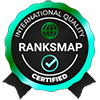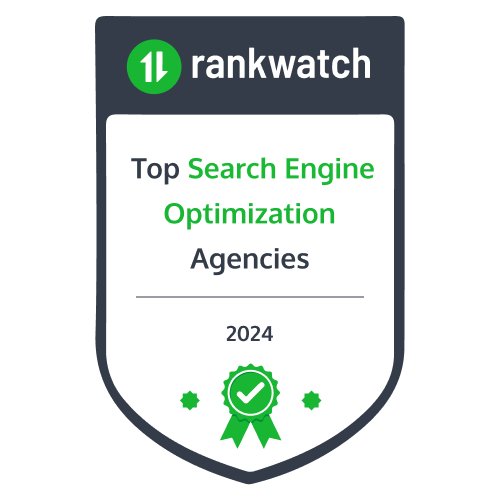Advertise on Facebook the right way to use Facebook Ads

The Power of Facebook Advertising and Why Businesses Should Utilize It
In today’s digital age, Facebook advertising has emerged as a powerful tool for businesses to reach their target audience and achieve their marketing goals. With over 2.8 billion monthly active users, Facebook provides an unparalleled platform for businesses to connect with potential customers and drive conversions.
One of the key benefits of Facebook advertising is its extensive targeting capabilities. Businesses can precisely define their target audience based on demographics, interests, behaviors, and even specific locations. This level of targeting ensures that your ads are seen by the right people who are most likely to be interested in your products or services.
Additionally, advertising on Facebook offers cost-effective solutions for businesses of all sizes. Compared to traditional advertising channels, such as TV or print media, Facebook ads can be created with smaller budgets and still deliver impressive results. The ability to set daily or lifetime budgets allows businesses to have full control over their ad spend and maximize their return on investment.
Furthermore, Facebook provides valuable insights and analytics that enable businesses to measure the effectiveness of their ad campaigns. Through detailed reporting features, you can track metrics such as reach, engagement, clicks, conversions, and more. This data-driven approach allows you to make informed decisions about your advertising strategy and optimize your campaigns for better performance.
Another advantage of advertising on Facebook is its integration with social media marketing strategies. By leveraging the power of social sharing and engagement on the platform, businesses can create a buzz around their products or services and expand their brand reach organically.
The power of Facebook advertising cannot be underestimated in today’s competitive market. Its vast user base combined with advanced targeting options, cost-effectiveness, analytics capabilities, and integration with social media marketing make it an essential tool for businesses looking to thrive in the digital landscape. By utilizing Facebook ads strategically, businesses can effectively reach their target audience and achieve their marketing objectives like never before.
The Factors That Determine Advertise on Facebook Costs
Understanding the factors that determine Facebook advertising costs is crucial for any business looking to optimize their ad spend. By delving into the various elements that influence these costs, advertisers can make informed decisions and maximize their return on investment.
One of the primary factors affecting Facebook ad costs is bidding strategies. Advertisers have the option to choose between cost per click (CPC) or cost per thousand impressions (CPM). The bidding strategy selected will impact how much an advertiser pays for each interaction or impression on their ad.
Another crucial factor is audience targeting. The more specific and targeted an audience, the higher the competition for reaching them. As a result, advertisers may need to bid higher to ensure their ads are shown to their desired audience.
Ad placement also plays a significant role in determining costs. Facebook offers various placements, such as newsfeed ads, right column ads, and Instagram Story ads. Different placements have different levels of demand and engagement, which can affect pricing.
Furthermore, other variables such as industry competitiveness, time of year, and ad relevance also influence Facebook advertising costs. Highly competitive industries may require higher bids to stand out amongst competitors. Additionally, seasonal fluctuations in demand can impact pricing as well.
It is important for advertisers to carefully analyze these factors when planning their Facebook advertising campaigns. By understanding how these elements interplay with one another, businesses can develop effective strategies that optimize their ad spend while achieving desired results on this popular social media platform.
Detailed breakdown of the Facebook Ads factors:
- Bidding Strategies: Cost per Click (CPC) vs. Cost per Impression (CPM)
- Audience Targeting: Relevance score, audience size, demographics
Ad Placement: News Feed ads vs. right column ads vs. Instagram ads
- Competition: Industry competition and demand for certain target audiences
Understanding Facebook Ads Auction System and Budgeting Options

Understanding Facebook’s ad auction system and budgeting options is crucial for advertisers looking to maximize their return on investment. With the ever-increasing competition on the platform, it is essential to have a solid grasp of how the ad auction process works and how to effectively allocate your budget.
The Facebook ad auction process determines which ads are shown to users based on various factors such as bid amount, ad relevance, and estimated action rates. By understanding this process, advertisers can strategically optimize their bids to increase their chances of winning the auction and reaching their target audience.
One important aspect of budgeting on Facebook is bid estimation. This feature helps advertisers estimate the number of impressions or conversions they can expect based on different bid amounts. By utilizing bid estimation, advertisers can make informed decisions about how much they should bid in order to achieve their desired campaign objectives.
Another crucial budgeting option on Facebook is Campaign Budget Optimization (CBO). CBO allows advertisers to set a single budget at the campaign level instead of allocating budgets at the ad set level. This feature automatically distributes your budget across different ad sets within a campaign based on performance data, optimizing your spending for maximum results.
Additionally, advertisers have the choice between daily and lifetime budgets when setting up their campaigns. Daily budgets specify a fixed amount that you are willing to spend per day, while lifetime budgets allow you to allocate a specific budget for the entire duration of your campaign. Understanding these options enables advertisers to effectively manage their spending and ensure that they stay within their desired limits.
Comprehending Facebook’s ad auction system and making informed decisions about budgeting options are essential for successful advertising campaigns. By leveraging bid estimation, CBO, and choosing between daily or lifetime budgets, advertisers can optimize their spending and increase the effectiveness of their ads on this popular social media platform.
Average Costs for Different Types of Facebook Ads for Brands and Industries
When it comes to advertising on Facebook, understanding the average costs for different types of ads is crucial for budgeting and planning effective campaigns. Whether you’re considering photo ads, video ads, or carousel ads, having a clear idea of industry benchmarks can help you make informed decisions.
Let’s start by exploring the average costs for different types of Facebook ads. Photo ads are a popular choice due to their simplicity and cost-effectiveness. On average, photo ads tend to have lower production costs compared to other ad formats. Video ads, on the other hand, often require more resources and investment but can yield higher engagement rates. Carousel ads offer a unique opportunity to showcase multiple products or features in a single ad unit.
To gain a deeper understanding of how these costs vary across industries, let’s examine some examples. In the e-commerce industry, where visuals play a significant role in driving conversions, photo and carousel ads are commonly used. Real estate businesses often leverage video ads to showcase properties and create an immersive experience for potential buyers. Service-based businesses may opt for any ad format depending on their specific offerings and target audience.
It’s important to note that these examples are just snapshots of how different industries utilize Facebook advertising; actual costs may vary based on factors such as audience targeting and competition within each industry.
By familiarizing yourself with the average costs associated with various types of Facebook ads and exploring industry benchmarks, you can make more informed decisions about your advertising strategies while optimizing your budget allocation effectively.
A Guide on How to Optimize Your Facebook Ad Campaigns within Your Budget Constraints
When it comes to running Facebook ad campaigns, optimizing your budget is crucial to achieving maximum results. With the right strategies in place, you can make the most out of your budget constraints and still achieve your campaign objectives.
One important tip for optimizing your budget allocation is to closely monitor and analyze your targeting parameters. By refining your audience targeting based on demographics, interests, and behaviors, you can ensure that you are reaching the right people who are more likely to engage with your ads.
Another key aspect of optimizing Facebook ad campaigns within a limited budget is creating compelling ad creatives. Your ads should be visually appealing and have persuasive copy that grabs attention and entices users to take action. A/B testing different variations of ad creatives can help you identify which ones resonate best with your target audience.
Monitoring performance metrics is also essential for optimizing your Facebook ad campaigns. Keep a close eye on metrics such as click-through rates (CTR), conversion rates, cost per acquisition (CPA), and return on ad spend (ROAS). By analyzing these metrics regularly, you can identify areas for improvement and make adjustments accordingly.
By implementing these tips and continuously refining your approach, you can optimize your Facebook ad campaigns within your budget constraints while still achieving impactful results.
Making Informed Decisions: Analyzing ROI and Determining if Facebook Advertising is Worth the Investment
In the ever-evolving world of digital marketing, making informed decisions about advertising investments is crucial for businesses to thrive. With the rise of social media platforms like Facebook, many marketers are considering whether Facebook advertising is worth the investment. In this section, we will explore how to analyze the return on investment (ROI) of Facebook advertising and determine its long-term benefits.
Calculating ROI is a fundamental step in evaluating any marketing campaign’s success. By tracking conversions and comparing them to the cost of running Facebook ads, businesses can gain insights into whether their investment is generating profitable returns. This analysis allows marketers to identify which campaigns are performing well and make data-driven decisions to optimize their advertising strategies.
However, it’s essential not to solely focus on short-term gains when evaluating the value of Facebook advertising. While immediate conversions are important, considering long-term benefits can provide a more comprehensive understanding of its impact on your business. For example, increased brand awareness and engagement may lead to customer loyalty and repeat purchases over time.
By carefully analyzing ROI and considering both short-term and long-term benefits, businesses can determine if investing in Facebook advertising aligns with their goals and objectives. Making informed decisions based on data-driven insights will empower marketers to allocate their resources effectively and maximize the potential returns from their digital marketing efforts.
Conclusion: Investing in Facebook Advertising Can Drive Results, Provided You Understand the Costs and Optimize Your Campaigns
In conclusion, investing in Facebook advertising can be a highly effective strategy for driving results and growing your business. However, it is crucial to understand the costs associated with running Facebook ads and to optimize your campaigns to maximize return on investment (ROI).
Analyzing the cost of Facebook ads is essential to ensure that you are allocating your budget effectively. By conducting a thorough cost analysis, you can identify which ad formats, targeting options, and bidding strategies yield the best results for your business.
To maximize ROI, it is important to continuously monitor and optimize your Facebook ad campaigns. This includes regularly reviewing key metrics such as click-through rates (CTR), conversion rates, and cost per acquisition (CPA). By identifying underperforming ads or targeting strategies, you can make data-driven adjustments to improve campaign performance.
By understanding the costs involved and optimizing your campaigns accordingly, investing in Facebook advertising has the potential to drive significant results for your business. With its vast user base and powerful targeting options, Facebook offers a valuable platform for reaching and engaging with your target audience effectively. So take advantage of this opportunity and leverage the power of Facebook advertising to grow your business.




